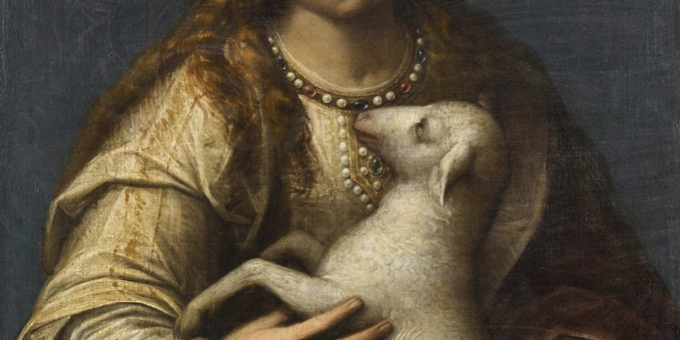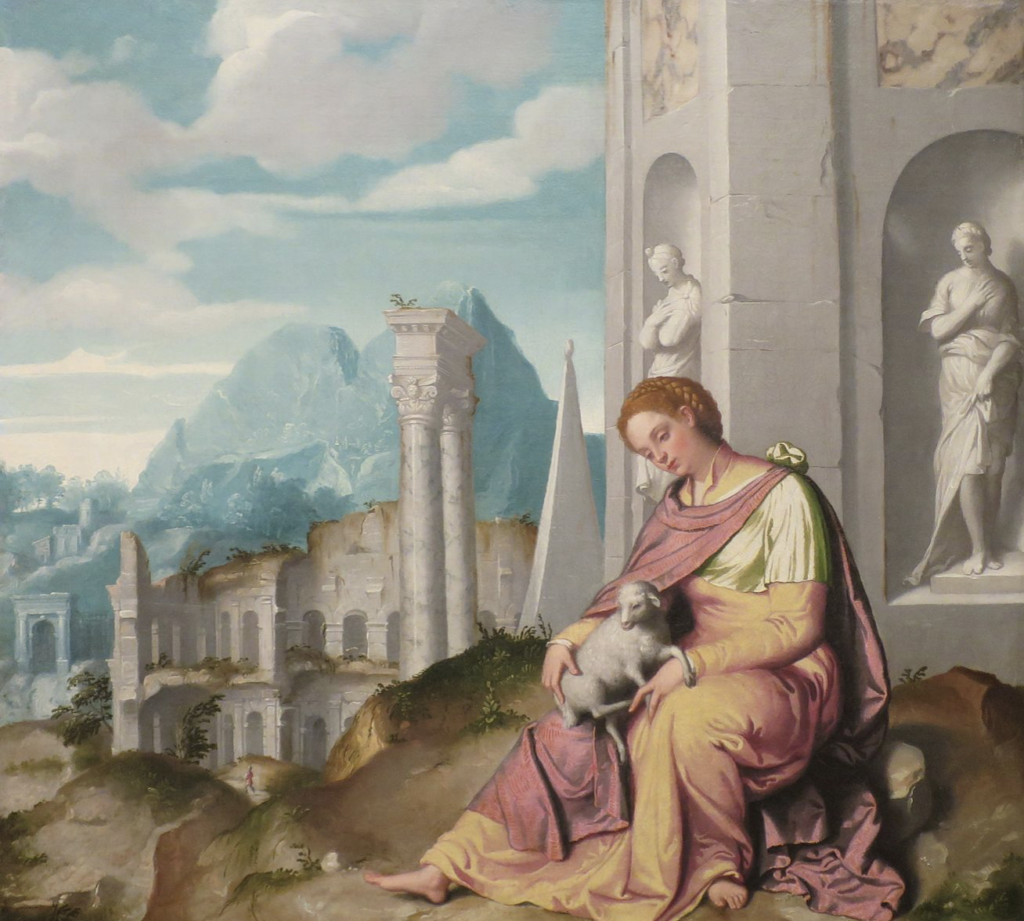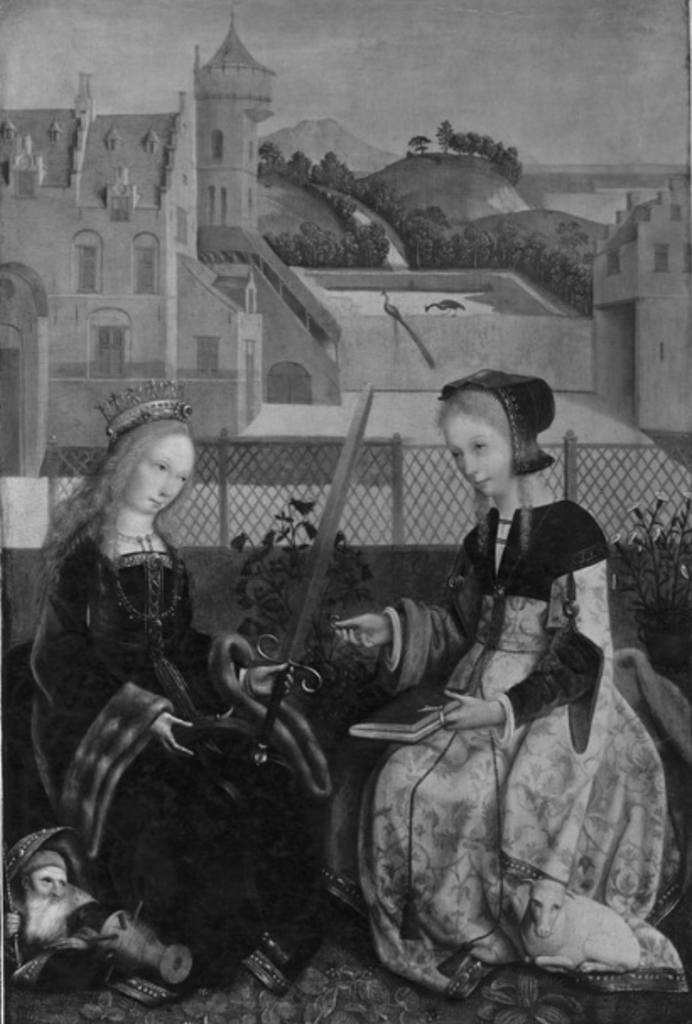
According to Christian mythology, St. Agnes was a Roman virgin who was executed when she turned down the advances of a Pagan youth.
Her feast day falls on January 21st and she is the patron saint of maidens and chastity.
Her Pagan Origin
But stories of Agnes were around long before the start of Christianity. According to the research done by Barbara G. Walker (The Woman’s Encyclopedia of Myths and Secrets), “her true nature as an orgiastic priestess-heroine might be guessed from her ineradicable connections with love and marriage. A priest became her bridegroom by placing a wedding ring on the finger of her statue…”
As the Pagan reverence of Agnes could not be killed off (many people called upon her in secret), Agnes was brought into the Christian religion as the Saint of Chastity, which is the complete opposite of what she represented in pre-Christian times.

To Know One’s Husband
For a saint who was opposed to marriage, there were numerous calls upon her to help maidens find a mate.
In Curiosities of Popular Customs by William Walsh (1897) we find:
“…[this] method was for a maiden to leave her home and go to a strange locality. When she retired to sleep that night she was to take her right-leg stocking and knit the left garter around it, saying the while,
“I knit this knot, this knot I kit,
To know the thing I know not yet,
That I may see
The man that shall my husband be,
Not in his best or worst array,
But what he wealth every day;
That I tomorrow may him ken
From among all other men.
“At the conclusion of these words she was to lie down on her back with her hands under her head, and her future spouse would surely appear in a dream and salute her with a kiss. In all cases the charm was rendered more certain if the maiden went supperless to bed.”

Dream Divination for a Husband
In Miscellanies Upon Various Subjects, published in 1696, by John Aubrey we find the following curious dream divination where St. Agnes is called upon to bring a dream of the person one will marry.
“The women have several magical secrets handed down to them by tradition, for this purpose, as, on St. Agnes’ night, 21st day of January, take a row of pins, and pull out every one, one after another, saying a Pater Noster, or (Our Father) sticking a pin in your sleeve, and you will dream of him, or her, you shall marry.”
Blessing of the Lamb
At one time, it was customary to bless a lamb on St. Agnes’ Day, but this too has a Pagan origin.
In Curiosities of Popular Customs by William Walsh (1897), we find that this custom was a recurrence “under Christian forms of the ancient Roman custom of invoking upon sheep the blessing of Pales, the goddess of sheepfolds and pastures. The lamb, gayly decorated, was first led through the streets by a holiday-making crowd.”

